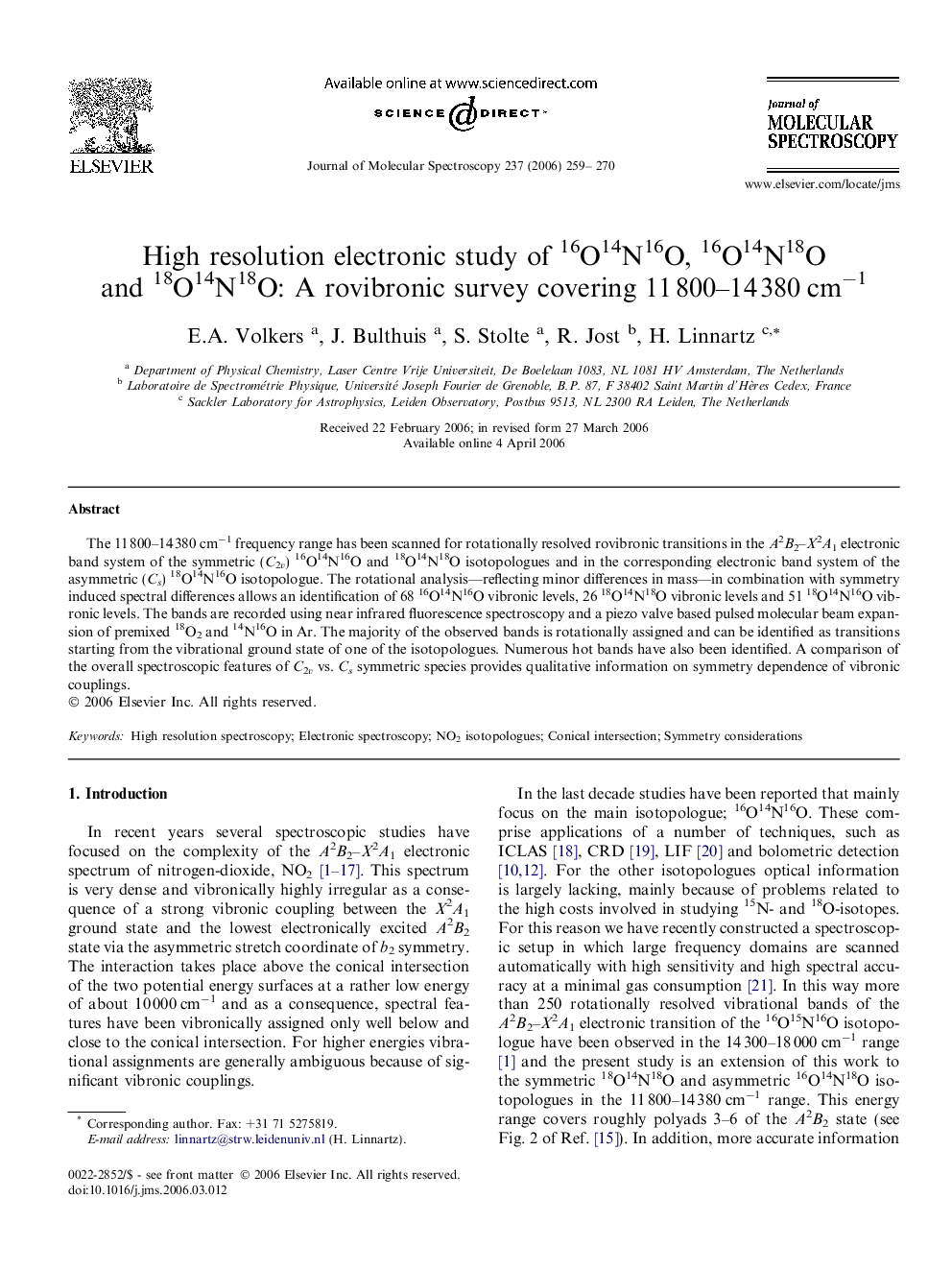| Article ID | Journal | Published Year | Pages | File Type |
|---|---|---|---|---|
| 5416175 | Journal of Molecular Spectroscopy | 2006 | 12 Pages |
Abstract
The 11Â 800-14Â 380Â cmâ1 frequency range has been scanned for rotationally resolved rovibronic transitions in the A2B2-X2A1 electronic band system of the symmetric (C2v) 16O14N16O and 18O14N18O isotopologues and in the corresponding electronic band system of the asymmetric (Cs) 18O14N16O isotopologue. The rotational analysis-reflecting minor differences in mass-in combination with symmetry induced spectral differences allows an identification of 68 16O14N16O vibronic levels, 26 18O14N18O vibronic levels and 51 18O14N16O vibronic levels. The bands are recorded using near infrared fluorescence spectroscopy and a piezo valve based pulsed molecular beam expansion of premixed 18O2 and 14N16O in Ar. The majority of the observed bands is rotationally assigned and can be identified as transitions starting from the vibrational ground state of one of the isotopologues. Numerous hot bands have also been identified. A comparison of the overall spectroscopic features of C2v vs. Cs symmetric species provides qualitative information on symmetry dependence of vibronic couplings.
Related Topics
Physical Sciences and Engineering
Chemistry
Physical and Theoretical Chemistry
Authors
E.A. Volkers, J. Bulthuis, S. Stolte, R. Jost, H. Linnartz,
